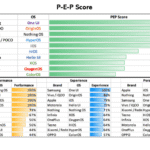
India stands at the cusp of a digital transformation unlike any other. With over 1.4 billion people and linguistic diversity spanning more than 1,600 languages, technology has long grappled with the challenge of inclusivity – building an interface between every Indian and the services they use. Today, as digital adoption accelerates, we are witnessing a paradigm shift — the emergence of the Vernacular Voice Revolution. This transformation is not just an incremental innovation; it is redefining the way India’s next billion users interact with technology.
Why Voice, and Why Now?
Despite widespread smartphone penetration and increasing internet accessibility, a fundamental challenge remains: language. English, the dominant language of the internet, is spoken by only 10-12% of Indian users. While regional language content has increased, the primary mode of interaction — typing — remains a barrier. Keyboards often fail to support the complex scripts and characters that each Indian language brings. And to add to it, literacy limitations further hinder seamless digital engagement.
Enter the medium of voice. Humans, by nature, are more inclined to communicate via speech. When we didn’t have a lexicon, we started using sounds and eventually developed a method of joining sounds together to create words. As such, voice becomes the most natural mode of communication.
Voice technology has emerged as a game-changer. Instead of requiring users to adapt to technology, voice-first interfaces allow technology to adapt to users. Smart voice assistants like Google Assistant, Amazon Alexa, and regional AI-driven solutions are revolutionizing accessibility. By eliminating the need for literacy in any particular language, voice technology creates an inclusive digital ecosystem where anyone can search, transact, and interact effortlessly.
Beyond Basic Voice Recognition: The Role of AI and NLP
Voice recognition is no longer just about understanding spoken words. Advancements in Natural Language Processing (NLP) and Machine Learning (ML) now enable conversational AI to decode context, dialects, and even regional linguistic variations. This capability is particularly crucial in India, where spoken Hindi in Delhi can sound vastly different from Hindi spoken in Bihar or Rajasthan.
Tech giants and homegrown innovators are leveraging AI to ensure that voice platforms grasp tone, sentiment and intent. From banking transactions in Marathi to agricultural assistance in Tamil, voice AI is breaking down barriers, enabling frictionless digital experiences. This is a monumental step forward, particularly for India’s rural population, where literacy challenges have historically restricted access to digital services.
Voice as a Catalyst for Economic Growth
The Indian voice-based AI market is expected to surpass $4 billion by 2025. The impact of this shift extends beyond convenience—it is driving financial inclusion, enhancing customer engagement, while unlocking new business and customer loyalty opportunities.
· Banking & Finance: Rural populations, previously excluded due to language barriers and complex user interfaces (UI), can now access banking services through voice-driven interactions
· E-commerce: Conversational commerce is set to boom, with consumers effortlessly placing orders, tracking deliveries, and receiving recommendations through vernacular voice assistants
· Healthcare & Education: Voice-enabled platforms are empowering patients to book appointments and access medical guidance, while students can receive educational content in their native languages
The Challenges Ahead: Localization, Privacy & Data Security
Despite its promise, the Vernacular Voice Revolution faces a few hurdles. The foremost challenge is ensuring deep localization. While major languages such as Hindi, Tamil, and Telugu are increasingly supported, India’s smaller dialects remain underserved. AI models must continuously evolve to capture these linguistic nuances based on cultural contexts, incorporating region-specific terminologies and colloquialisms.
Another critical concern is data security. Voice-based interactions involve the transmission of sensitive information, making privacy safeguards imperative. With growing adoption especially in rural areas where data privacy awareness is limited, companies must comply with data protection regulations while educating users on adopting data security measures and knowing their rights.
The Future: A Voice-Driven India
The next billion users will not be passive consumers of technology—they will be active participants, engaging in their native languages. This is not just a technological shift; it is a cultural and economic revolution that will redefine digital accessibility.
Companies that recognize and invest in voice-first experiences will be the frontrunners of this transformation. As AI continues to evolve, the vision of a seamless, voice-enabled
India is within reach—one where technology speaks the language of the people, not the other way around.

-Tapan Barman, Co-founder and CEO, Mihup
About Tapan Barman: Tapan Barman is the Co-Founder and CEO of Mihup, a leading conversation intelligence platform established in 2016. With over 16 years of experience, Tapan has built a reputation as a visionary entrepreneur, driving innovation at the intersection of technology and business. Under his leadership,
Mihup has grown into a trusted platform that leverages artificial intelligence to enable seamless communication, ensuring technology is inclusive and accessible, regardless of language, accent, or dialect.





